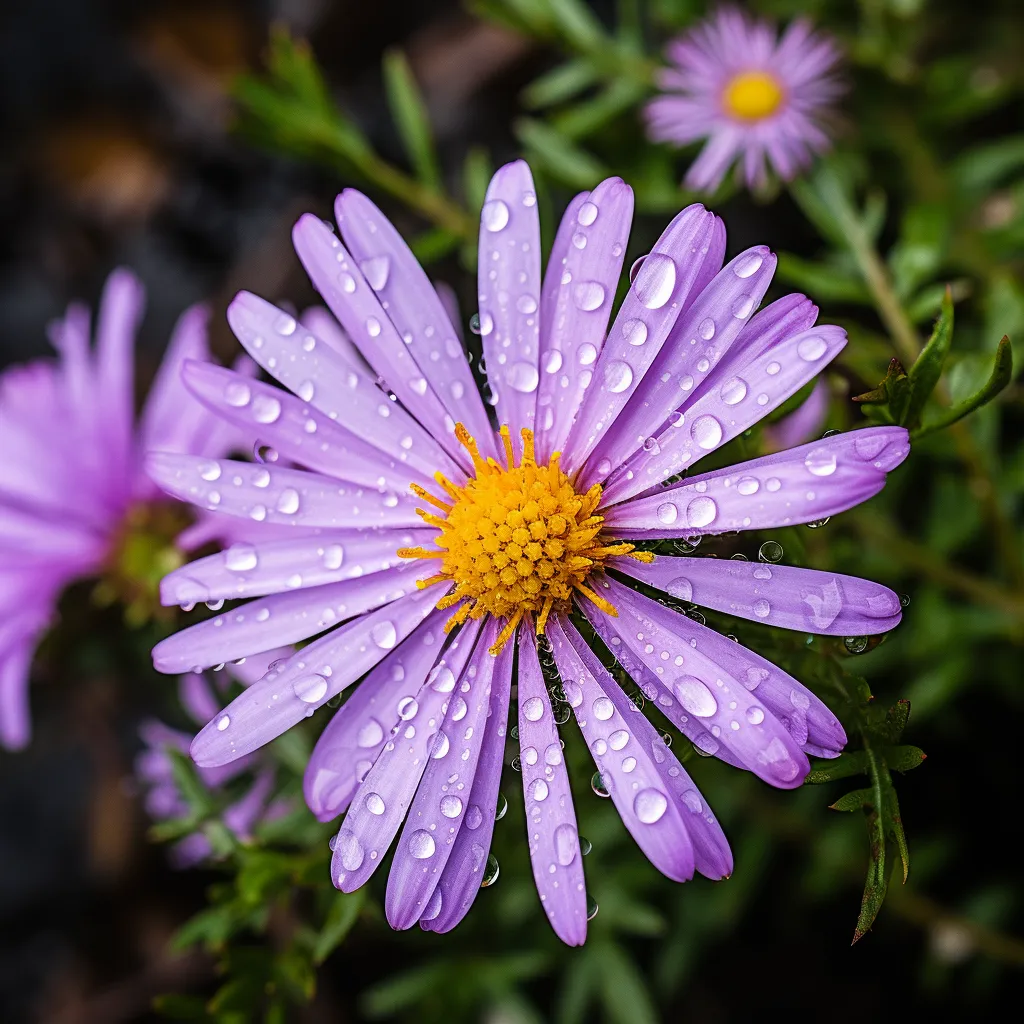Story of Day :
Contents
- 1 Symphyotrichum novae-angliae James Ritchie (New England aster James Ritchie) Plant Care Tips
- 2 Planting Location
- 3 Watering
- 4 Pruning
- 5 Fertilizing
- 6 Pest Control</h3 Symphyotrichum novae-angliae James Ritchie is generally resistant to pests and diseases but may occasionally encounter some issues. Here are a few common problems and how to address them: Aphids: These small, soft-bodied insects can cluster on the stems and leaves of your plants. Use a strong stream of water or insecticidal soap to remove them. Powdery Mildew: This fungal disease can cause a white powdery coating on the leaves. To prevent it, ensure good air circulation around your plants by spacing them adequately and avoid overhead watering. Slugs and Snails: These pests can chew holes in the foliage of your asters. Use organic slug pellets or handpick them off your plants in the evening when they are most active. In Conclusion
Symphyotrichum novae-angliae James Ritchie (New England aster James Ritchie) Plant Care Tips
Are you looking to add a pop of vibrant color to your garden? Look no further than the Symphyotrichum novae-angliae James Ritchie, also known as the New England aster James Ritchie.
This beautiful flowering plant is native to North America and is a favorite among gardeners for its stunning blooms and easy care.
In this article, we will provide you with some essential plant care tips to help you grow and maintain this gorgeous perennial in your own garden.
Planting Location
The first step in successfully growing Symphyotrichum novae-angliae James Ritchie is choosing the right planting location.
This plant thrives in full sun but can tolerate partial shade.
It prefers well-draining soil but can adapt to various soil types, including clay or sandy soil.
- Select a location that receives at least six hours of direct sunlight per day.
- Avoid areas with standing water or poor drainage, as these conditions can lead to root rot.
- If your soil is heavy clay or sandy, consider improving it by adding organic matter such as compost before planting.
Watering
Symphyotrichum novae-angliae James Ritchie has moderate water needs and does not like overly wet conditions.
Follow these watering guidelines for optimal growth:

- Water newly planted asters regularly until they become established.
Aim for about an inch of water per week, either from rainfall or manual watering.
- Avoid overwatering as it can lead to root rot and other diseases.
Allow the soil to dry out slightly between waterings.
- In hot, dry weather, increase watering frequency to prevent the plant from drying out.
Pruning
Regular pruning is essential for maintaining the shape and health of your Symphyotrichum novae-angliae James Ritchie plants.
Follow these pruning tips:
- In early spring, before new growth appears, cut back the stems to about six inches above ground level.
This will help promote bushier growth and more abundant blooms.
- After flowering, deadhead spent blooms by cutting them back to a leaf node or lateral branch.
This will encourage further blooming and prevent self-seeding.
- If you want to control the size of your plants or prevent them from spreading too much, you can trim them back by one-third in late summer or early fall.
Fertilizing
Symphyotrichum novae-angliae James Ritchie is a low-maintenance plant that doesn’t require frequent fertilization.
However, providing some nutrients can help promote healthy growth and more profuse flowering:

- In early spring, apply a slow-release fertilizer with balanced nutrients according to package instructions.
Avoid using excessive amounts of nitrogen-rich fertilizers as this can lead to leggy growth with fewer flowers.
- You can also top-dress the soil around your asters with compost or well-rotted manure once a year in early spring for an organic nutrient boost.</lI
</uLPest Control</h3
Symphyotrichum novae-angliae James Ritchie is generally resistant to pests and diseases but may occasionally encounter some issues.
Here are a few common problems and how to address them:
- Aphids: These small, soft-bodied insects can cluster on the stems and leaves of your plants.
Use a strong stream of water or insecticidal soap to remove them.
- Powdery Mildew: This fungal disease can cause a white powdery coating on the leaves.
To prevent it, ensure good air circulation around your plants by spacing them adequately and avoid overhead watering.
- Slugs and Snails: These pests can chew holes in the foliage of your asters.
Use organic slug pellets or handpick them off your plants in the evening when they are most active.
In Conclusion
Symphyotrichum novae-angliae James Ritchie is a stunning flowering plant that can bring beauty to any garden with its vibrant blooms.
By following these plant care tips, you can ensure healthy growth and abundant flowering year after year.
Remember to choose a sunny location with well-draining soil, water regularly but avoid overwatering, prune as needed for shape and health, fertilize sparingly but adequately, and address any pest or disease issues promptly.
Now go ahead and add this delightful perennial to your garden for an explosion of color!

- Aphids: These small, soft-bodied insects can cluster on the stems and leaves of your plants.